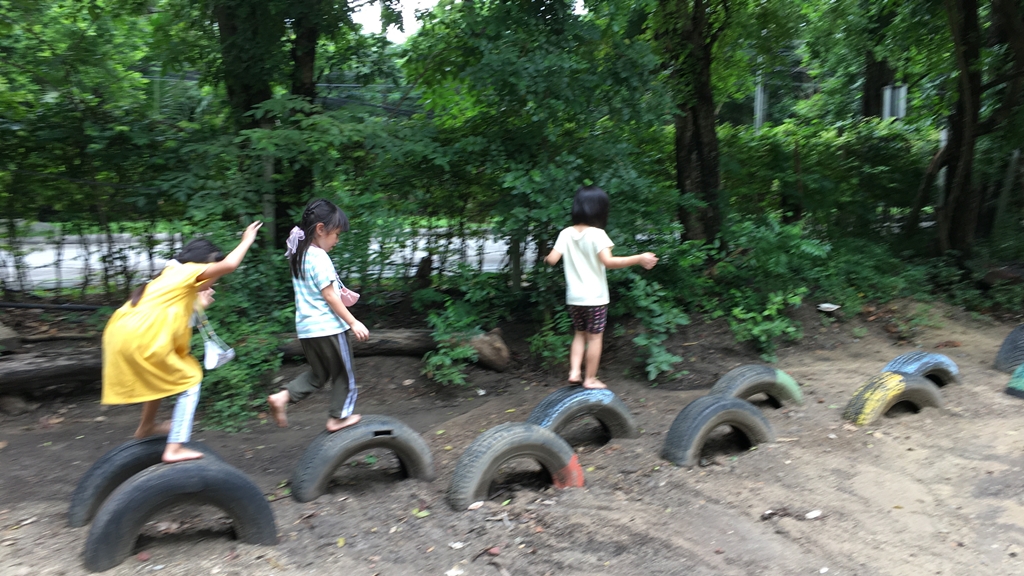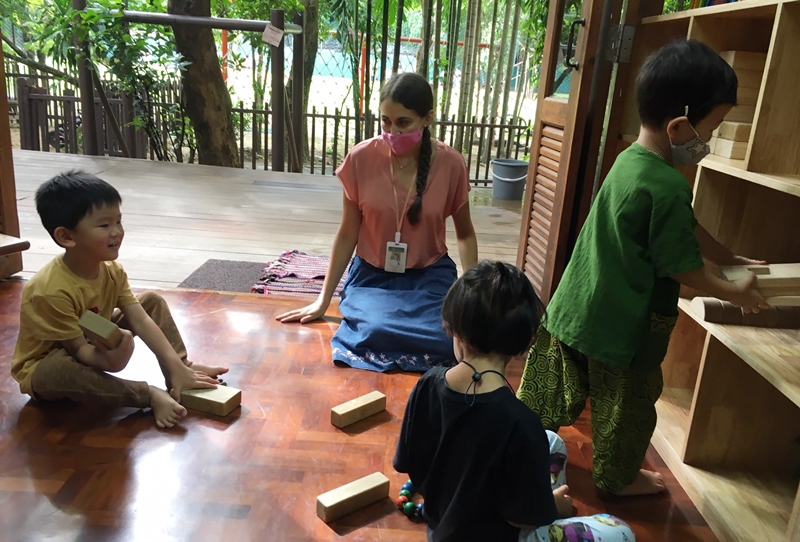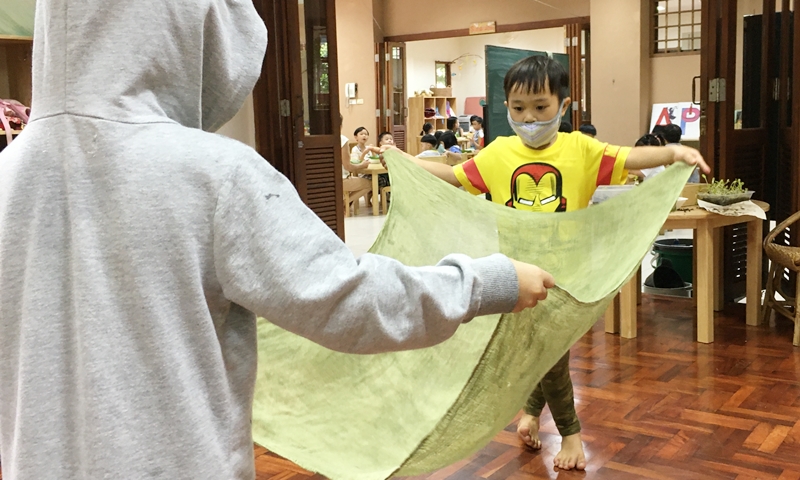
Learning by Living: The Rhythms and Routines of a Kindergarten Day
Transitioning to and through CleanUp Time
As free time ends, the clean-up song is heard. The lights flip off; students recognize the signals that it’s now time to stop and help clean up. Learning signals, lighting, shapes, colors all comes before language and makes communication easier. They may not have many words yet, but they see what’s happening around them, and can help put the blocks back on the shelves in their proper space. They learn how to manage themselves, step by step.
According to Cru Air, cleanup time is about helping each other in a community. She explains, “So, cleanup time is not just about getting everything into places but there’s some learning inside that. For example, when they have to put the toys away, they have to learn about categorizing, grouping. We also practice observation skills because when we ask them to clean, they have to observe the toys and the place that they are kept. So this skill will also help them later on for other subjects, other things, when they want to learn, [because] they are developing the observation skills.”
Teacher Fern notices that cleanup is like an opportunity for students to be more aware of themself in relation to the space. For example, when teachers say “‘Did you put the chairs under the table?’ there’s a sense that they’re aware, so their heart or their desire will not go, go, go all the time. Especially for the young kids, they want to do, do, do, because they are self-centered at this age. How can we train them for looking back?” The experienced teachers question each situation, looking for moments when they recognize that children are cleaning up without the teacher telling them. For Fern, this is a type of mindfulness that each child is developing in relation to their space and the others around them.
“Tic toc, it’s time to pick up our toys!” is a cadenced song with a happy, steady beat during cleanup. Sometimes the KG-1 students do more than the older ones during clean up, as energetic KG-2 and KG-3 girls and boys are easily distracted on some days. That’s okay; they’re all learning day by day. Each day, the students re-discover that there’s a time for cleanup, feeling a regular expectation of it arising in themselves, along with how tidying their space fits into the day’s rhythm for self-regulation too.
The rhythms and routine of the day are especially about supporting students as they learn self-regulation, or self-control. Teacher Gift elaborates:
They will regulate themself during the rhythm of the day because we have freedom and discipline, freedom, structure, freedom, structure. At home they may play all day long, but then when they walk into the school, the school has a culture, different from their home. So, they need to [adjust themselves to the new environment appropriately, to train themself to be disciplined and to [self-]regulate, to control themself to be free and structured.
Watching how long it takes to clean up clues in Teachers Fern and Andrea to know if extra slowness or guidance may be needed on some days.
So the rhythms and routines continue onward each day. The “Wash, wash, wash your hands” song signals that cleanup is over and they can go to one of the sinks to wash up before the next activity. An eagerness is felt when Circle time is about to begin, anticipation for the quiet space or active songs that the Circle represents in each child’s thinking.



